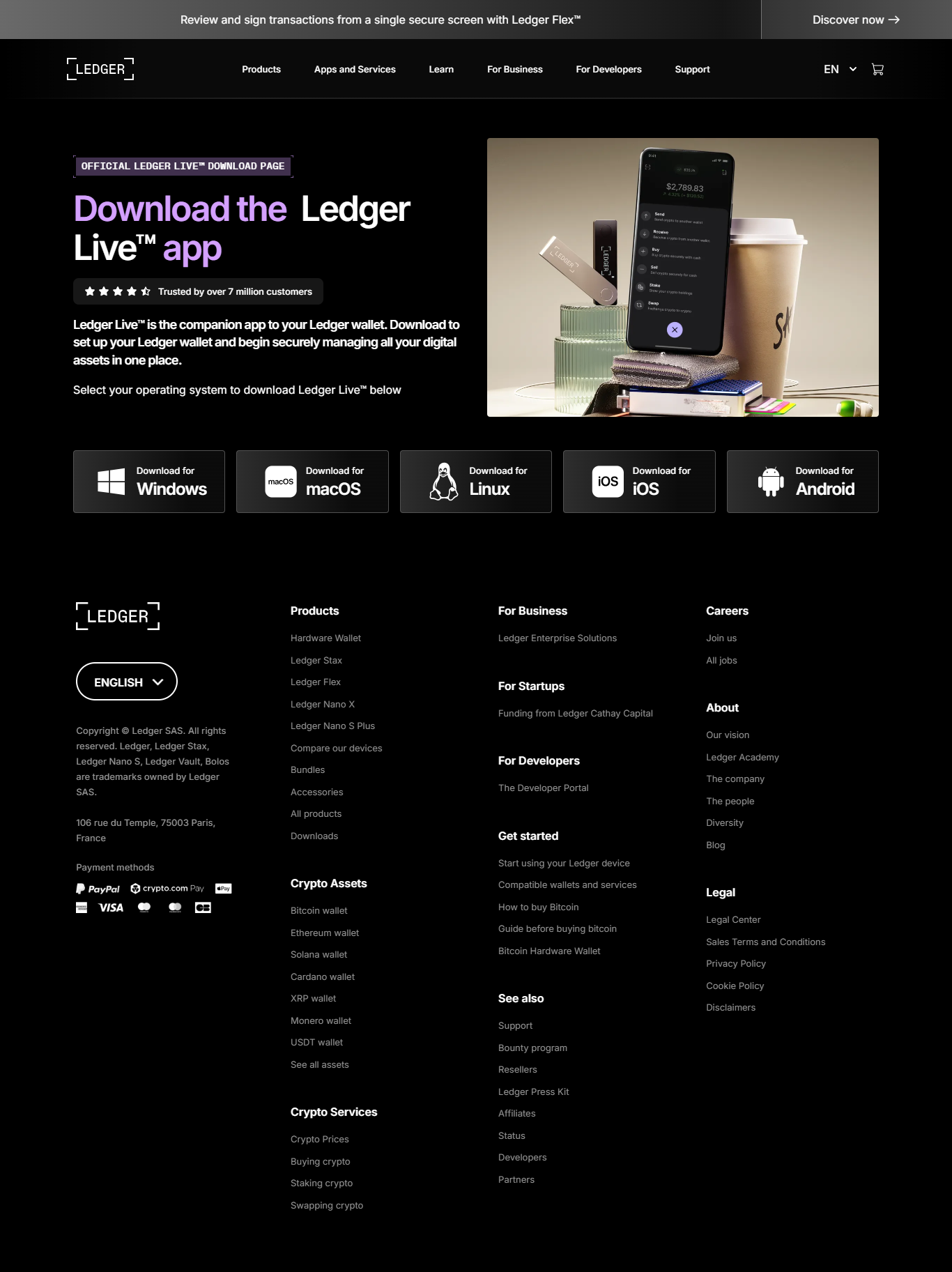
Ledger Live Login — Full 2025 Security Guide for Safe Crypto Access
A deep dive into how Ledger Live Login really works, how to securely access your crypto portfolio, and best practices for hardware wallet authentication.
What Exactly Is Ledger Live Login?
If you're new to hardware wallets, the phrase "Ledger Live Login" can sound like it involves typical sign-in steps such as entering an email, password, or two-factor code. But Ledger Live is not a web-based crypto account or cloud wallet. Instead, the login process revolves entirely around your physical Ledger hardware device — meaning authentication is fully offline, encrypted, and isolated from the internet.
Ledger's approach ensures that your private keys never leave the secure chip embedded in the device. No passwords exist to be stolen. No online session tokens can be hijacked. Every interaction must be physically approved on your Ledger Nano S Plus, Nano X, or Ledger Stax. This makes Ledger Live one of the safest interfaces for controlling digital assets.
🔐 No Password Required
Your Ledger hardware device acts as your login key. No passwords = no leaks.
🛡 Hardware Authentication
Identity is verified inside Ledger’s secure element chip — not online.
📵 Offline Private Keys
Your private keys never touch Ledger Live or the internet.
How Ledger Live Login Works Step-by-Step
The process is streamlined, ultra-secure, and beginner-friendly. Below is a detailed breakdown of the authentication steps every user follows:
1. Open Ledger Live
Launch the desktop or mobile Ledger Live app. It prepares the environment for secure device connection.
2. Connect Your Ledger Device
Plug in your device via USB or connect via Bluetooth on Nano X. Ledger Live identifies your device instantly.
3. Unlock It Using Your PIN
Your Ledger PIN is entered directly on the device, never through Ledger Live. This protects it from online threats.
4. Ledger Live Authenticates Your Device
The app uses cryptographic attestation to ensure your hardware wallet hasn’t been tampered with.
5. Dashboard Access Granted
You now have full access to your accounts, balances, NFT collections, staking dashboards, and market tools.
Why Ledger Live Login Is More Secure Than Password Logins
Cloud wallets and exchange platforms rely on centralized databases, making them targets for hacking attempts, credential leaks, SIM swapping, and phishing attacks. Ledger bypasses all of that with offline hardware-based verification.
🧱 Zero Online Credentials
There are no stored passwords, meaning attackers have nothing to steal.
🔐 Secure Element Chip
All cryptographic verification happens inside tamper-proof hardware.
📲 Mandatory Physical Confirmation
Even if someone accessed your computer, they can’t confirm transactions without the device itself.
Troubleshooting Ledger Live Login Issues
Most Ledger Live login issues are simple connectivity or firmware problems. Here is how to resolve the most common ones:
📌 Ledger Device Not Detected
• Use a different USB cable • Avoid USB hubs • Update Ledger Live • Unlock your device before connecting
📌 Bluetooth Pairing Issues (Nano X)
• Restart Bluetooth • Keep distance under 6 feet • Remove old Bluetooth profiles
📌 Frequent PIN Mistakes
Ledger resets after three incorrect attempts. Always memorize your PIN securely and avoid writing it digitally.
“Your Ledger device is more than a wallet — it’s your identity, your security, and your gateway to decentralized finance. Protect it like your digital life depends on it.”
Ledger Live Login vs. Standard Wallet Login
| Feature | Ledger Live Login | Password Wallet Login |
|---|---|---|
| Authentication Method | Hardware device required | Cloud-based credentials |
| Private Key Exposure | Stored offline | Stored online or in software |
| Phishing Risk | Extremely low | High |
| Recovery Method | Recovery phrase only | Email or SMS resets |
Frequently Asked Questions
Does Ledger Live have a login password?
No. The Ledger device itself is the authentication method.
Can someone access my Ledger Live without my device?
Not possible. Ledger Live requires physical hardware for access.
Is my recovery phrase needed for login?
No. The recovery phrase is only for device restoration.
What if I lose my Ledger device?
Restore your wallet on a new Ledger using your recovery seed.
Final Thoughts: Ledger Live Login Made Simple & Secure
The Ledger Live Login system represents a new standard of crypto security. Instead of relying on weak or hackable online credentials, Ledger gives users complete power through hardware authentication. Your device becomes your gateway — your key to DeFi, NFTs, staking, and multi-crypto management.
With offline key storage, mandatory physical verification, and one of the most secure authentication frameworks in the crypto world, Ledger Live ensures your digital assets remain safe, accessible, and fully under your control.
If you take your security seriously, mastering Ledger Live Login is your strongest first step.